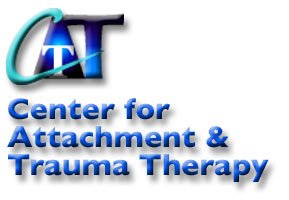
Virtual Therapy
I offer online therapy sessions for adults, adolescents & children.
I understand how attachment trauma impacts us as children, and later as adults. I also understand how an adopted child with attachment trauma can impact the entire family - parents, siblings, and even friends.
I also have experience treating the following:
Attachment trauma (aka RAD, developmental trauma)
Complex trauma, PTSD
Sexual assault
Dissociative disorders
Adoption issues
Identity issues arising from transracial adoption
Chronic pain
Anxiety & depression
Grief and loss
I use a variety of therapeutic approaches, including art, narrative, (virtual) sandtray, and Eye Movement Desensitization and Reprocessing (EMDR) therapy. The most important aspect of therapy is an attuned, healing relationship between therapist and client. I approach each therapy session with empathy, curiosity and creativity. A conversation between two people, with one listening compassionately, can lead the speaker (the client) to new insights. But sometimes words are not enough.
EMDR: When Words Are Not Enough
When upset from a distressing event is not processed, those thoughts, images, emotions, and body sensations may become stuck in the memory system. For someone living with unresolved trauma, certain situations or behaviors can become triggers, in which something happening in the present causes an overwhelming feeling of reliving the traumatic event (also known as a flashback). Triggers can interfere with healthy responses to many situations and create additional challenges in relationships.
EMDR is a therapeutic process that utilizes bilateral stimulation to enable the brain to process stored traumatic memories. In EMDR, bilateral stimulation uses touch, eye movement, or sound on alternating sides of the body to (a) help process disturbing memories and (b) enhance feelings of calm, positivity, and well-being. Although the traumatic experience is not forgotten, the fight, flight, freeze response is no longer attached to the memory. EMDR can be done virtually in a variety of ways, and we will work together to find the way that works best for you.
Virtual Therapy for Adolescents, Children & Families
Traditional therapy techniques are usually unproductive for children with attachment trauma (aka reactive attachment disorder (RAD) or complex trauma), since traditional therapy techniques rely on the child’s ability to form trusting relationships, which an attachment impaired child is unable to do. Unlike traditional therapy, attachment & trauma therapy seeks to build the bonds of trust between a parent and child, not between the therapist and child. Attachment & trauma therapy involves the parents and the child working together, so that the child is not left to confront their past trauma alone. Attachment & trauma therapy is directive, experiential and compassionate, in that it deals with the drama, trauma and truth of the child’s life.
I provide treatment fitted to the specific needs of each individual, child and family. My approach to attachment & trauma therapy is multi-faceted and may include any or all of the following:
Assessment and evaluation of the child for attachment trauma (reactive attachment disorder - RAD), post-traumatic stress disorder (PTSD) or complex trauma, and other post-institutional and adoption issues
Assessment, evaluation and treatment of individuals (adolescents and adults) for complex and simple traumas occurring in the past or present
Experiential education in high nurture/high structure parenting
Trauma therapy using EMDR, narrative & bibliotherapy, cognitive behavioral therapy (CBT), art therapy, and dyadic developmental psychotherapy
Cognitive restructuring for adoption and trauma issues, including life-book creation
A Multi-faceted Approach
As part of my multi-faceted approach to trauma & attachment therapy, I frequently take into account the body-mind connection. There are many food allergies and intolerances that can cause irritability, hyperactivity, or even rageful outbursts in children. Additionally, many children with attachment trauma were deprived of the sensory input that infants need for their typical development. Many of my clients have shown dramatic improvement when the following elements were integrated into trauma & attachment therapy:
Examination for food allergies
Sensitivities to foods, artificial dyes and artificial preservatives




